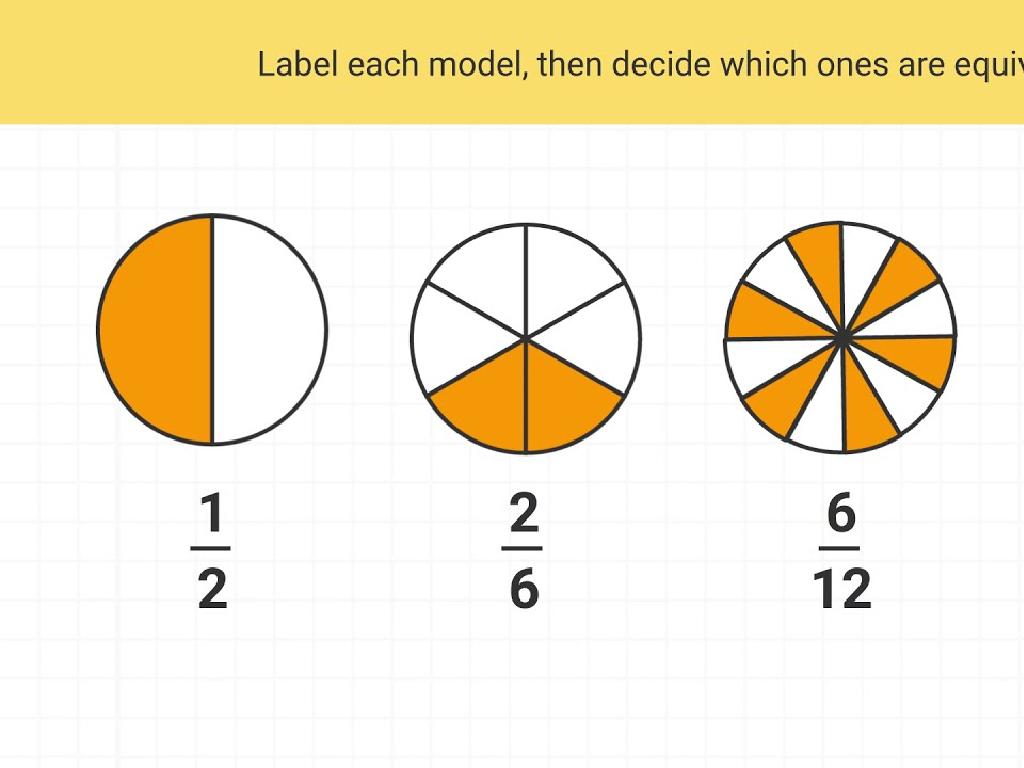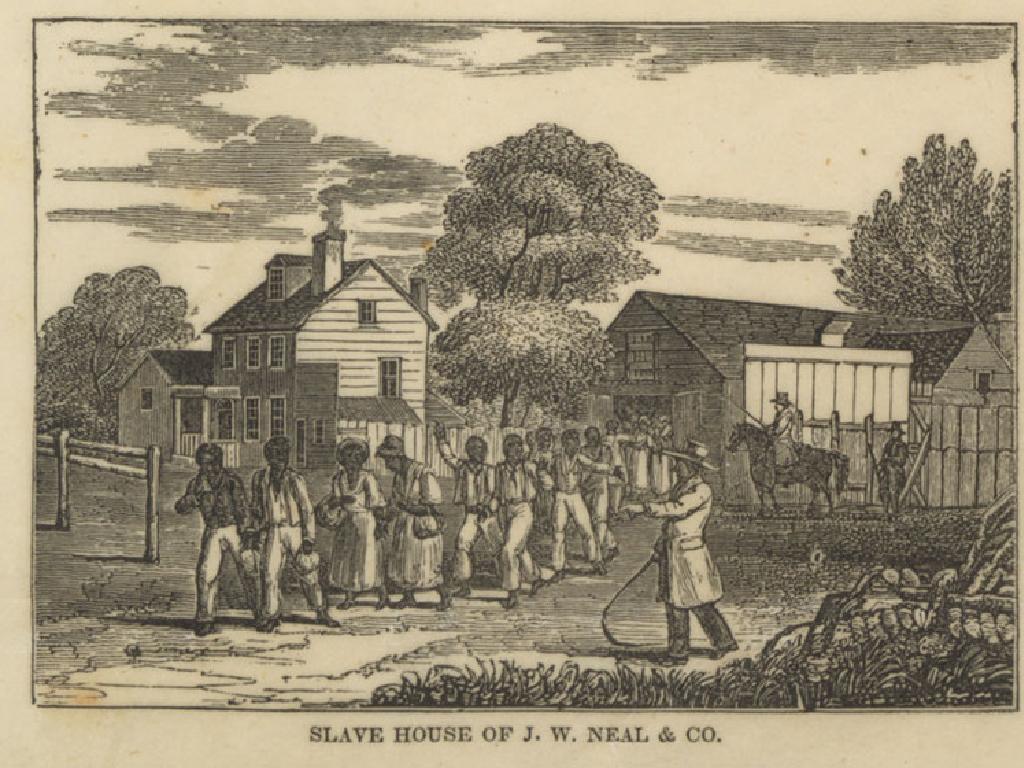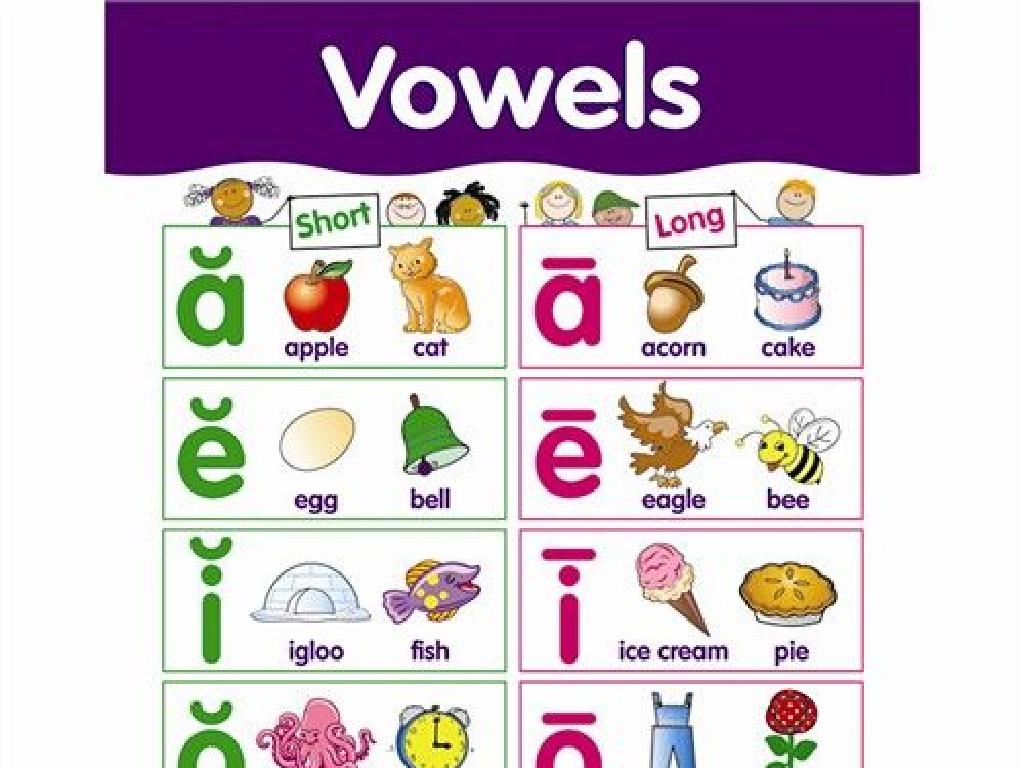Multiply A 2-Digit Number By A 2-Digit Number
Subject: Math
Grade: Fourth grade
Topic: Multiply By Two-Digit Numbers
Please LOG IN to download the presentation. Access is available to registered users only.
View More Content
Multiplying Big Numbers!
– Multiplication as repeated addition
– Think of 4 x 3 as 4+4+4. It’s the same idea with bigger numbers!
– Why learn two-digit multiplication?
– It’s useful for real-life problems, like calculating area or buying multiple items.
– Steps to multiply two-digit numbers
– Line up the numbers, multiply each digit, then add the results.
– Example: 23 x 45
– Let’s break down how to multiply 23 by 45 step by step.
|
This slide introduces the concept of multiplication as repeated addition, which is a foundational understanding for fourth graders. Emphasize the practicality of multiplying two-digit numbers in everyday life, such as figuring out the total cost when buying several items or calculating the area of a space. Walk through the steps of multiplication: lining up the digits, multiplying each digit in the bottom number by each digit in the top number, and then adding up all the products. Use the example of 23 x 45 to illustrate these steps, showing the process on the board and solving it together with the class. Encourage students to practice with different numbers to gain confidence.
Multiplication Vocabulary
– Multiplicand: number to multiply
– If we have 23 x 15, 23 is the multiplicand
– Multiplier: number you multiply by
– In 23 x 15, 15 is the multiplier
– Product: multiplication result
– Multiply 23 by 15 to get the product, which is 345
|
This slide introduces students to the basic vocabulary of multiplication, which is essential for understanding how to multiply two-digit numbers. The multiplicand is the number that is being multiplied, and the multiplier is the number you are multiplying by. The product is the result you get after multiplication. Use examples like 23 x 15 to illustrate these terms in a practical context. Encourage students to identify the multiplicand, multiplier, and product in different multiplication problems to familiarize themselves with these terms.
Visualizing Multiplication with Arrays
– Arrays represent multiplication
– Draw rows and columns
Arrays use rows and columns to show numbers
– Example: 12 x 3
12 items in 3 rows show 12 x 3
– Practice with different numbers
Try creating arrays for 14 x 4 or 16 x 2
|
This slide introduces the concept of using arrays to visualize multiplication, which helps students understand how multiplication works beyond memorization of facts. Start by explaining that an array is a set of objects arranged in rows and columns that can represent a multiplication problem. Show the example of multiplying 12 by 3 by drawing 3 rows with 12 items in each row. This visual representation helps students see that multiplication is essentially repeated addition. Encourage students to draw their own arrays with different numbers to solidify their understanding. In the next class, review their practice examples and discuss any challenges they encountered.
Step-by-Step Multiplication
– Step 1: Multiply the ones
– If we have 34 x 76, start with 4 x 6
– Step 2: Multiply the tens
– Next, do 30 x 76 (since 30 is the tens of 34)
– Step 3: Add the results
– Finally, add both products to get the total
|
This slide is aimed at teaching fourth graders how to multiply two-digit numbers. Begin by multiplying the ones place digits of both numbers. Write this product beneath the equation. Next, multiply the tens place digit of the first number by the second number, remembering to add a zero as a placeholder for the ones place. Write this product beneath the first product. Lastly, add both products together to find the final answer. It’s crucial to align the numbers correctly by place value when adding. Use examples like 34 x 76 to illustrate the process, and encourage students to practice with different numbers to gain confidence.
Let’s Try Together: Multiplying Two-Digit Numbers
– Example to solve: 23 x 45
– Break into parts: 20 x 45 and 3 x 45
– First, multiply the tens place, then the ones
– Multiply each part separately
– 20 x 45 = 900, 3 x 45 = 135
– Add the results for the final answer
– 900 + 135 = 1035, our final answer
|
This slide is an interactive class activity where students will learn to multiply two-digit numbers using a step-by-step approach. Start with an example like 23 x 45, and guide the students through the process of breaking it down into more manageable parts. First, multiply the tens place (20 x 45), then the ones place (3 x 45), and solve each multiplication separately. Afterward, add the two results together to find the final answer. Encourage students to follow along with their own paper and pencil, and ask for volunteers to solve each part aloud. This exercise will help solidify their understanding of the multiplication process and build their confidence in solving similar problems.
Practice Makes Perfect: Multiplication
– Try multiplying: 34 x 76
– Use the method we learned to multiply these numbers.
– Now solve: 52 x 63
– Remember to align the numbers correctly and add the products.
|
This slide is designed to provide students with the opportunity to apply the multiplication method they’ve learned to solve 2-digit by 2-digit multiplication problems. Encourage the students to set up the problems correctly, with one number above the other, and to remember to carry over numbers when necessary. After they’ve multiplied the ones, remind them to shift the starting place one place to the left when they begin multiplying the tens. It’s important to go over each step and ensure they add the partial products correctly to find the final answer. Offer guidance and support as they work through these problems, and be ready to provide additional examples if needed. This practice will help solidify their understanding of multi-digit multiplication.
Understanding Errors in Multiplication
– Common multiplication mistakes
– Misalignment of digits, carrying errors
– Strategies to avoid errors
– Double-check each step, align numbers properly
– Using reverse operations
– Verify answers by dividing the product by one of the original numbers
– Importance of checking work
|
This slide aims to help students identify and avoid common mistakes when multiplying two-digit numbers. Emphasize the importance of aligning numbers correctly and the potential for carrying errors. Teach students to double-check each step of their multiplication. Introduce the concept of reverse operations, such as division, to check the accuracy of their answers. For example, if they multiply 23 by 17 and get 391, they can divide 391 by 17 to see if the answer is 23. Encourage students to always verify their work to develop good mathematical habits.
Multiplication Games: Bingo Time!
– Engage in multiplication bingo
– Each number is a product of 2 digits
– Example: 12 x 15 could be a number on the card
– Mark your bingo card correctly
– Use multiplication skills to find products
– First to complete a row wins!
|
This slide introduces a fun and interactive multiplication game, Multiplication Bingo, to help students practice multiplying two-digit numbers. Prepare bingo cards with products of two-digit multiplication problems. During the game, call out multiplication problems instead of numbers, and students will have to solve them and then mark the corresponding product on their bingo cards. This activity not only reinforces multiplication skills but also encourages quick mental math and attentiveness. Possible variations of the game could include having different difficulty levels, timed rounds, or team play to foster collaboration among students.
Class Activity: Multiplication Art
– Create a colorful multiplication chart
– Combine art and math by designing a vibrant chart
– Use the chart for today’s problems
– Apply your chart as a tool to solve multiplication
|
This activity is designed to blend creativity with mathematical practice. Students will create their own multiplication charts using colors and designs of their choice, which will aid in memorizing multiplication facts. Once the charts are complete, they will use them to solve a set of problems provided by the teacher. This hands-on approach not only makes learning multiplication more engaging but also helps students visualize the process. For the activity, provide students with colored pencils, markers, or crayons, and large paper sheets. Possible variations of the activity could include pairing students to compare charts, challenging them to use their chart to solve a puzzle, or even having a timed challenge to see how quickly they can solve problems with their chart.
Great Work and Homework Time!
– Congratulations on learning multiplication!
– Homework: Solve 5 two-digit problems
– Find a quiet place to focus on your worksheet
– Use the methods we learned in class
– Remember to line up the numbers correctly
– Always double-check your answers
– Checking helps you catch any mistakes
|
This slide marks the conclusion of the lesson on multiplying two-digit numbers. It serves to praise the students for their effort and introduces their homework assignment. The homework consists of a worksheet with five problems that require the students to apply the multiplication methods they’ve learned. Remind them of the importance of organizing their work and checking their answers. For the next class, plan a review of the homework to address any common errors and reinforce the concepts. Encourage students to ask questions if they’re unsure about the homework problems.





